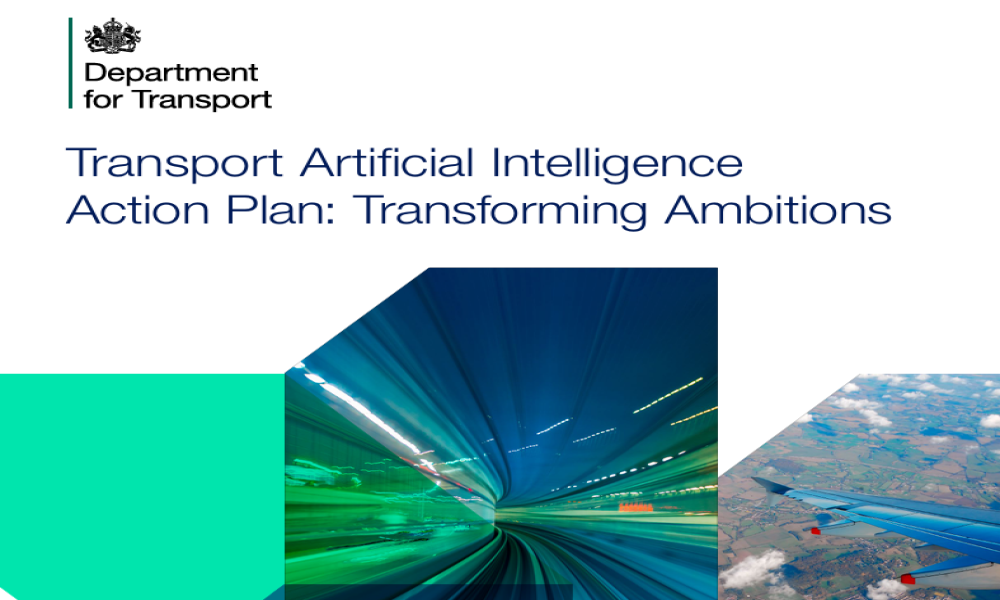The UK's Department for Transport has laid down the gauntlet with its new Transport AI Action Plan. This isn't just another policy paper; it's a comprehensive roadmap designed to embed Artificial Intelligence into the very fabric of the nation's transport system, promising a future of cheaper, cleaner, and safer journeys for all.
Artificial Intelligence is no longer the stuff of science fiction. From optimising traffic flow in our cities to predicting maintenance needs on our railways, AI is already delivering a tangible impact across the UK transport network. However, we are now standing on the precipice of a monumental shift. The Department for Transport (DfT) recognises this, and its recently unveiled Transport AI Action Plan is a bold declaration of intent to harness this transformative potential.
The plan sets out a clear and ambitious vision: "Responsible AI embedded in a resilient transport system delivering cheaper, cleaner, and safer journeys for all." This is more than a catchy slogan; it's the guiding principle for a national effort to integrate AI ethically and effectively, cementing the UK's position at the forefront of the global AI revolution. The strategy acknowledges that while the opportunities are vast, the path to an AI-driven future must be navigated with care, balancing innovation with robust risk management.

The Four Pillars of a National Ambition
To realise this vision, the DfT has structured its plan around four key objectives, forming the strategic pillars upon which this new era of transport will be built.
First and foremost is the commitment to adopt AI responsibly to deliver better transport for all. This foundational principle emphasises that progress cannot come at the cost of public trust. The plan mandates that AI systems must be ethical, safe, secure, and accountable, respecting the rights and interests of users, workers, and the wider public.
Secondly, the plan aims to maximise the economic benefit from AI applications in transport while reducing environmental impacts. The numbers are staggering. The UK's self-driving vehicle industry alone is forecast to be worth £42 billion and create 38,000 skilled jobs by 2035. By fostering innovation and investment in AI, the DfT aims to unlock this economic potential, creating new jobs and skills while simultaneously driving efficiencies that will lead to a greener, more sustainable transport system. This was powerfully underlined in May 2024, when UK AI firm Wayve secured over $1 billion-the largest AI investment in UK history-to develop AI for self-driving vehicles.
The third objective is to secure the UK's position at the forefront of transport-related AI applications. This involves nurturing a world-class research and development ecosystem, promoting international collaboration on standards, and showcasing the UK's leadership in this burgeoning field.
Finally, the plan turns its focus inward, seeking to utilise AI to enhance the quality, efficiency, and effectiveness of the DfT itself. By strengthening its own data and digital capabilities, the department aims to lead by example, embedding AI across its policy and delivery functions to make smarter, data-driven decisions.

From Strategy to Action: A Five-Point Plan
Translating these ambitious objectives into reality requires a concrete plan of action. The DfT has outlined a five-pronged approach to ensure the foundations for an AI-enabled transport system are securely laid.
1. Leadership: The DfT will provide the necessary policy, governance, and oversight. A crucial action is working with the private sector to develop leadership statements for AI implementation and collaborating with local authorities to drive transformational change in areas like AI-powered traffic management.
2. Skills and Capabilities: Acknowledging that technology is only as good as the people who use it, the plan prioritises upskilling the workforce. This includes delivering AI apprenticeships, hosting secondments within the DfT, and developing a "Transport sector AI Community of Practice" to share learning and accelerate adoption across the industry.
3. Infrastructure and Data: AI is fuelled by data. The forthcoming Transport Data Action Plan 2025 will be critical in setting the conditions for the productive use of high-quality transport data. The plan also advocates for practical initiatives like hackathons and the creation of APIs to directly link data owners with AI innovators, sparking creative solutions to real-world transport challenges.
4. Applications: The focus here is on identifying and supporting the most promising uses of AI. This ranges from publishing an assessment on how AI can improve transport security to developing a roadmap for robotics and sensing technologies that allow AI to interact with the physical world. Critically, major infrastructure projects will now be required to review their use of AI and investigate potential cost and carbon savings.
5. Engagement: The plan is built on a foundation of partnership. The DfT is committed to working closely with government bodies, operators, regulators, and innovators. Crucially, this includes undertaking social and behavioural research to maintain an open dialogue with the public, ensuring their needs and concerns are at the heart of this technological transition.

AI in Action: From Theory to the Real World
This action plan isn't being developed in a vacuum; it builds upon a growing number of successful AI implementations across the UK.
In Greater Manchester, Transport for Greater Manchester (TfGM) has partnered with CitySwift to use AI to analyse traveller behaviour and service quality on its Bee Network. The platform provides data-driven recommendations to optimise timetables and routes, delivering more reliable and efficient bus services for passengers.
Meanwhile, the Tees Valley Combined Authority has created a sophisticated "digital twin" of its transport network. This virtual representation uses AI to simulate and predict traffic conditions up to 60 minutes in the future, allowing for proactive interventions that prevent delays before they even occur.
The DfT itself is pioneering the use of AI internally. Computer vision algorithms are being used to automate the previously labour-intensive analysis of roadside images to measure compliance with vehicle excise duty, saving hundreds of hours of work. Similarly, Natural Language Processing (NLP) is being explored to more rapidly and accurately analyse public consultation responses.
Perhaps the most high-profile area is automated vehicles. The Automated Vehicles Act provides a world-leading legal framework, putting safety at the heart of the technology's rollout. Recognising the rapid pace of development, the DfT is already working to enable advanced trials and early commercial pilots to take place from 2026, building an iterative and evidence-based regulatory framework.
The Transport AI Action Plan is a landmark document. It is a clear, comprehensive, and collaborative strategy that signals the UK's readiness to embrace the future. For professionals in the Intelligent Transport Systems sector, it represents a call to action and an unprecedented opportunity. The government is setting the stage, providing the framework, and fostering the partnerships needed for innovation to flourish. The journey ahead will be transformative, and with this plan as its guide, the UK is firmly in the driver's seat.
150x150.png)